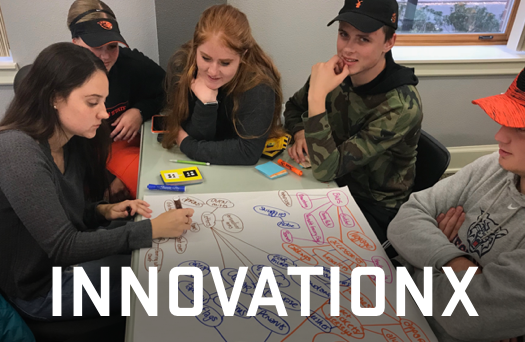Business renewal, as a part of stewarding the family enterprise for future generations, is a fundamental process of long-lasting family firms.
Renewal doesn’t just mean creation of a new product or service, or investment in new technology or infrastructure, though both are important. Nor does the act of reinventing the company need to be confined to the current owners or executive management. Business renewal impacts the entire family. Active engagement by each generation can invigorate the business and create a culture of entrepreneurship that fuels growth and strengthens family bonds.
Here are three perspectives on business renewal from different generational points of view: the incumbent or current owning generation, the next or succeeding generation, and the youngest or future generation.
Incumbent or Current Owning Generation
Historically current business owners have been solely responsible for driving progress and renewal. After all, they control the decision-making authority and bank account. Investments in infrastructure or expenditures on new product development will ultimately need to secure their approval.
There is another path for renewal that owners of multigenerational family firms should consider; the process of succession of the business to the next generation of family owners. Succession planning necessarily requires a deep dive and review of the business and family. A review of the strategic plan, key personnel needs, family governance structures, and other high-level business and family processes, spur renewal.
Succession planning rarely begins with a structured schedule. Case studies of real-world succession processes show that there is often a “trigger event” that starts the process in earnest (Murray 2003). This could be an external trigger, such as a medical emergency with an owner, disruption in the marketplace, or prodding from a trusted professional advisor (Shrapnel 2014).
External triggers are unreliable and often come as a surprise, forcing the family be reactive with their planning. Owners can take a proactive approach by carefully considering their retirement timeline. Communicating a planned retirement date to the family and business can act as a trigger for succession planning.
Committing to a retirement date well into the future can give the family and business ample time to identify and commit to successors, work on business strategy and preparation, and engage outside professionals to help with the transition.
Circling a retirement date on the calendar doesn’t mean there is an urgency to push the founders or current owners out of the business. To the contrary, identifying a retirement date can free owners up to begin working “on the business” in a way that they simply could not while they were concerned with day to day management. Their contributions to planning and mentoring are crucial to ensure the business remains viable into the next generation of family ownership.
Nor does picking a retirement date mean that the family business, which has given fulfillment and identity to the owner for a large portion of their life, need be absent after retirement. Retired owners can spend more time mentoring or teaching the young, “future” generation family members about the business and family legacy, working on philanthropic activities, or contributing as an informal advisor to the business.
Next or Succeeding Generation
The generation coming into ownership and leadership of the business can look at strategy and entrepreneurship as a means of renewal.
A thorough strategy renewal, which can be initiated during the succession planning phase, will help the family business examine its place in the market, strengthen client and vendor relations, reimagine branding, and generally make the business more efficient by working on processes and personnel. Conducting this review while current owners are able to contribute provides historical and operational perspectives on the business.
Working to renew strategy during the succession process can also help the next generation build on and maintain the entrepreneurial spirit that drove the founders or preceding generations to current levels of success.
According to Guido Corbetta, Chair in Strategic Management in Family Business at Bocconi University in Milan, a strong entrepreneurial culture leads to business renewal, growth and internationalization. The family reaps benefits of entrepreneurial growth as well. As the business grows so does the family’s legacy, and family members have a greater variety of choices on how they involve themselves with the enterprise (Corbetta 2014).
Corbetta also notes that because family firms of all sizes tend to focus on a small number of business areas, they can quickly accumulate technical, industrial and commercial expertise in those areas. In turn they can marshal this expertise to constantly create and innovate in their field, fostering natural cycles of business renewal.
The long-term orientation of family businesses is also a valuable asset to entrepreneurs working from inside the firm. Intrapreneurs, as they are sometimes called, can typically rely on access to financial, human, social and reputational capital that the family business has built up over preceding years and generations; resources which are rarely available to entrepreneurs just starting out with brand new ventures (Miller 2015).
In summary, most family firms foster an environment that is extremely positive for entrepreneurs. The next generation should not only embrace the entrepreneurial mindset but should view it as critical to their mission of taking the family enterprise forward to greater success.
Youngest or Future Generation
Younger members of the family may not yet be involved in the business or even be familiar with the growing legacy of the family. That doesn’t mean they cannot play their own important role in renewing the business.
Sharna Goldseker, executive director of multigenerational family philanthropy nonprofit 21/64, suggests that children who grow up around wealth tend to internalize family and wealth values long before they are formally involved in the enterprise (Goldseker 2006). The earlier you communicate family values and practices and engage young family members, the better prepared they will be for their future roles in the business.
Philanthropic activities can be an excellent way to reach young family members and involve them in meaningful activities associated with the family and business. Because philanthropy is a values-based endeavor, it can provide a framework to teach the family and business values and legacy to the young family members.
Family members from different generations grow up with a different experience and perspective of the world. Working closely with one another on projects outside of the business can help bridge gaps in understanding and perspectives and grow cohesion and trust among family members.
Activities that allow young family members to research and evaluate potential charitable causes, followed by debate on which causes to ultimately fund, can be powerful tools to build business and financial acumen. Stretching a limited philanthropic budget to achieve goals teaches the importance of financial management and sound decision-making.
Philanthropic projects need not be complicated to and can be structured to work with any level of financial commitment, whether members occupy seats at the family foundation board or a small group of committed family members. Some families have separate funds that allow children to allocate small “grants” to causes they have researched.
How does all this tie into renewing the business? Involving young family members in philanthropy can build their business and communication skills while strengthening family bonds. The perspective and energy of younger family members can invigorate other members. One day the future generation will be embarking on their own succession journey and the business will be well-served by the values and skills they gained while working on philanthropic projects.
Conclusion
Renewing the family business is a key concern to keep the enterprise in family ownership for future generations. Current owners can use the work of reinventing the company as a learning opportunity for all generations. What unites each is an understanding that succession can be embraced as a “renewal starter,” while an entrepreneurial mindset can fuel each generation to innovate, refresh and guide the enterprise to even greater success.
How have different generations of your family contributed to the renewal of your enterprise?
References
Winter, Susan (2017), Talking Across Generations: Philanthropy as a Communication Tool, Family Firm Practitioner, https://ffipractitioner.org/talking-across-generations-philanthropy-comm...
Noye, Bill (2017), How can Philanthropy Benefit Your Family Business?, KPMG Insights, Retrieved from https://home.kpmg.com/xx/en/home/insights/2016/08/how-can-philanthropy-b...
Credit Suisse (2015), Funding as a Family: Engaging the Next Generation in Family Philanthropy, Institute for Philanthropy, Retrieved from http://c.ymcdn.com/sites/www.ffi.org/resource/dynamic/forums/20170610_121305_22644.pdf
Corbetta, Guido (2014), Maintaining an Entrepreneurial Spirit Across Generations, EY Family Business Yearbook 2014: 158-163, Retrieved from https://familybusiness.ey-vx.com/pdfs/158-163.pdf
Davis, John & Roberts, Michael (2014), Managing the Family Business: Entrepreneurs Needed for Long-Run Success, Harvard Business School Working Knowledge, Retrieved from https://hbswk.hbs.edu/item/managing-the-family-business-entrepreneurs-ne...
Miller, Danny (2015), Family Firms and Entrepreneurship: A Different Point of View, Family Firm Practitioner, Retrieved from https://ffipractitioner.org/family-firms-and-entrepreneurship-a-differen...
Jaffe, Dennis & Flanagan, Jane (2012), Three Pathways to Evolutionary Survival: Best Practices of Successful, Global, Multi-Generational Family Enterprises, Working paper for Family Office Exchange and Family Business Network
Shrapnel, Richard (2014), Succession Reset: Family Business Succession in the 21st Century, Baker Tilly International
Murray, Barbara (2003), The Succession Transition Process: A Longitudinal Perspective, Family Business Review 16(1): 17-34









